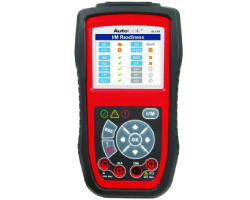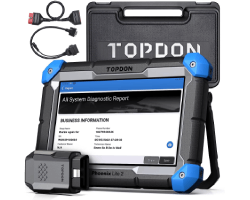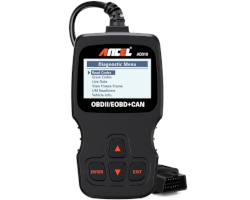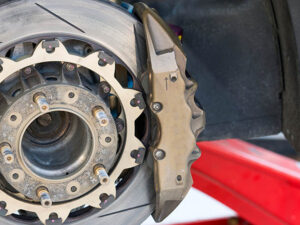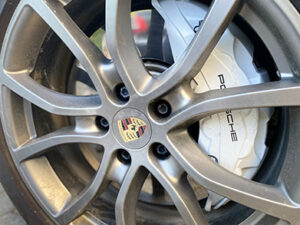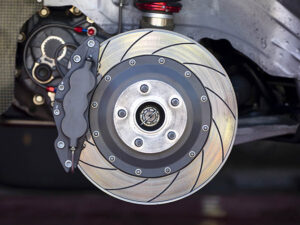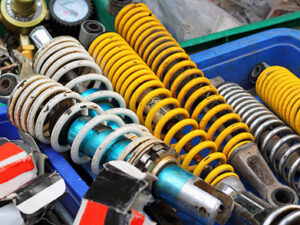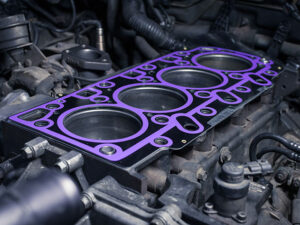Home \ Shop \ Car Electronics \ OBD2 Scanners
Best OBD2 Scanners To Buy in 2025 (TOP 10 Review)
OBD-II scanner is your first line of defense, pinpointing the underlying issue and guiding you towards a resolution
- 1. AUTEL AL539 3-in-1 Scanner
- 2. TOPDON Phoenix Lite 2
- 3. ANCEL AD310 Classic OBD-II Scanner
- 4. BLUEDRIVER Bluetooth Pro OBD2 Scanner
- 5. INNOVA 3160RS Pro OBD2 Scanner
- 6. BAFX Bluetooth OBDII Reader for Android
- 7. FIXD OBD2 Professional Bluetooth Scan Tool
- 8. ANCEL AD410 Enhanced OBD 2 Vehicle Code Reader
- 9. ANCEL FX2000 OBD2 Scanner with ABS SRS Transmission Support
- 10. VEEPEAK OBDCheck BLE OBD2 Bluetooth Scanner for iOS & Android
- 11. Why Use an OBD2 Scanner?
- 12. Types of OBD2 Scanners
- 13. Picking the Best OBD2 Scanner
- 14. OBD2 Trouble Codes
OBD2 scanners, despite the technical name, are fairly straightforward and very useful for any driver. They are small devices that give you a transparent view of your car’s condition and vastly simplify diagnostics. Instead of having to figure out your vehicle’s problems on your own any time the check engine light comes on, this handy system does it for you.
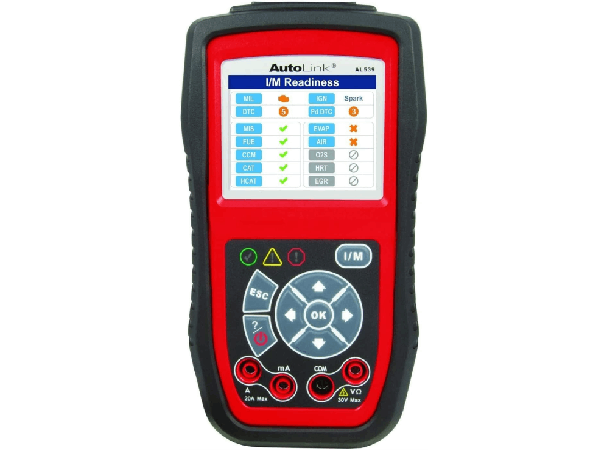
PROS
- Has the battery tester and avometer onboard
- Very convenient as the basic scanner
- It's good to have it in every home garage
- High affordability as for 3-in-1 device
CONS
- Doesn't have professional and wider test options which more expensive scan tools normally have
This 3-in-1 scanner is a multifunctional diagnostic tool designed to cater to both basic and advanced automotive diagnostic needs. Beyond the standard OBD2 functionalities, one of its standout features is its capability to evaluate electrical systems, encompassing tests for the battery, starter, and charging system. This dual-functionality makes it even a three-in-one tool (Code Reader + Battery Tester + Avometer), catering to both engine and electrical diagnostics.
Great 3-in-1 DIY Automotive Assistant: helps with all OBD-II basic routines and tests the car’s electrical infrastructure
The device strikes a balance between robustness and user-friendliness. It typically sports a durable yet compact design, making it both portable and resilient to the occasional knock or drop. A distinctively clear and brightly-lit screen ensures that readings and data are easily legible, even in low-light conditions. Intuitive buttons and a straightforward user interface enhance its appeal, ensuring that both professionals and DIY enthusiasts can navigate its functions with ease. To the discerning consumer, its wide compatibility range with various vehicle models, coupled with its dual diagnostic capabilities, positions the Autel AL539 / AL539B as a prime choice in automotive scanners.
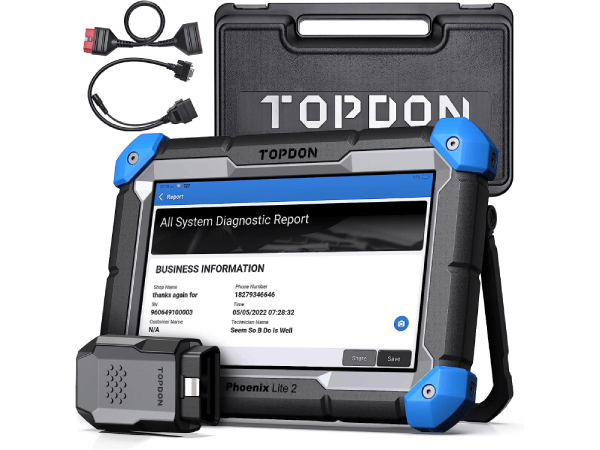
PROS
- Online/ECU coding access, able to unlock the hidden functions
- Bi-Directional controls to help accurately identify problems
- Sufficient 34+ maintenance services available
- Wireless, convenient, has a good display and robust body
CONS
- Do not support topology map
The TOPDON Phoenix Lite 2 is a top-tier automotive diagnostic scanner designed for professionals and auto enthusiasts who desire a comprehensive and efficient tool. What sets the Phoenix Lite 2 apart is its access to online and ECU coding, enabling users to unlock hidden functions and match newly installed ECUs. This feature is particularly invaluable for a range of vehicles, including notable brands like VW, PORSCHE, BMW, and MERCEDES-BENZ. Moreover, the V.A.G guided function, compatible with brands like VW, SKODA, and SEAT, simplifies the diagnostic process by providing users with step-by-step procedures for tasks such as calibrations and matching.
Best Semi-Professional Scanner: top-tier features for almost every diagnostic demand
Phoenix Lite 2 boasts an 8-inch high-resolution LCD screen with a 1280*800 pixel display, ensuring clear visibility for intricate diagnostics. Backed by a substantial 12600mAh battery, users can enjoy up to 24 hours of operation without the need for frequent charging. This diagnostic giant supports 34+ maintenance services, from basic functions like oil reset and throttle adaption to advanced features like ECU resets and turbocharging matching. In terms of compatibility, it delves deep into systems like Engine, Transmission, ABS, and TPMS for over 200 vehicle models. With enhanced hardware, including a good enough processor and memory size, and running on Android 10.0, the Phoenix Lite 2 ensures swift, smooth operations. Add in the convenience of Bluetooth connectivity and two years of free software updates, and you have a device that assures both longevity and peak performance in automotive diagnostics.
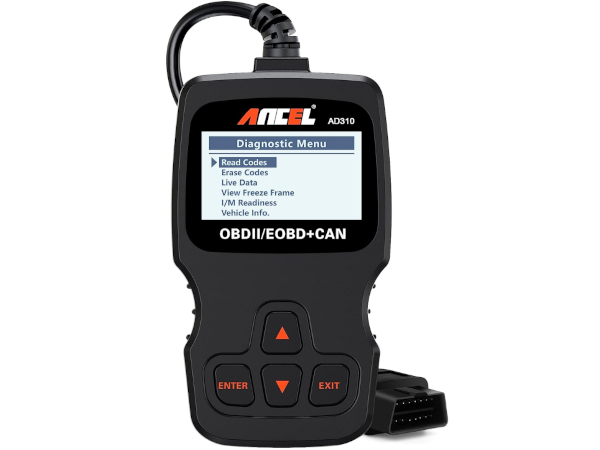
PROS
- Supports a wide range of cars (most 1996 or newer)
- Convenient and user-friendly
- Able to stream live data for monitoring
- Very affordable
CONS
- Limited mostly to check engine codes
- It doesn't cater to ABS or SRS
It’s a user-friendly and solid choice for both novice car enthusiasts and savvy drivers. This device excels in identifying check engine light (CEL) issues and swiftly provides solutions, ensuring your vehicle remains in peak condition.
Diagnostics Made Easy: our winner among low-cost OBD2’s
Beyond the basic tasks like resetting monitors and addressing CEL concerns, ANCEL AD310 offers an immersive diagnostic experience by presenting live data, capturing essential vehicle information, freezing data, and even showcasing code definitions directly on its screen. No need for batteries or chargers; simply connect the AD310 to your vehicle’s 16-pin OBDII DLC. Upon connection, it powers up, guides you to initiate the ignition, and dives right into diagnostics. Its operation, whether with a key or keyless, is straightforward. Simply ignite the car (without starting) or use the start button as per the provided instructions.
The ANCEL AD310 boasts a quality build, promising durability and longevity. Moreover, its user-friendly interface, combined with its functionalities, makes it an invaluable addition to any vehicle maintenance toolkit.
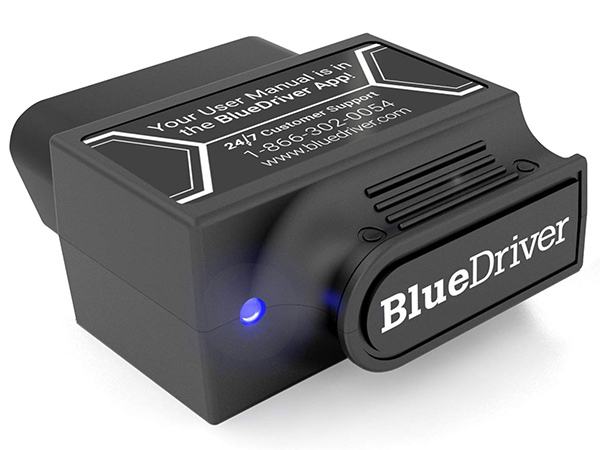
PROS
- Free vehicle specific Repair Reports
- Convenient and user-friendly
- Developed by professional engineers
- Made with quality assurance
- Certified for Apple and Android
CONS
- Limited selection of non-American cars
- Limited code reading outside North America
The BlueDriver OSB2 scanner certainly puts up a fight when it comes to competing for the top spot. It even beats out the Innova in a few categories, such as portability (at just 2 ounces) and price (in some cases, half the price of the Innova).
Great for America: developed by Professional Engineers in North America
While it doesn’t boast a color screen (or a screen at all), it certainly doesn’t need to. The scanner combines cutting-edge technology with a small and user-friendly device. Plugging in the BlueDriver and downloading the necessary app (iPhone or Android) allows the user to get not only accurate real-time codes, but also live data and readings for things like fuel pressure and oxygen levels. It can also estimate whether you would pass a smog test at any given point, essentially notifying you when attention is required. Note that a few users had the issue of lost connection when their phone screens went to sleep; this will tamper with the accuracy of the data output.
While this product is quite affordable and offers a lot of features, there are a few drawbacks. Namely, the BlueDriver will only recognize non-check engine codes (i.e. ABS, airbag, etc.) on North American cars, making it a bit underwhelming outside this region. Also note that the selection of cars isn’t as universal as the Innova; there is typically an accompanying list in this product’s descriptions that you can check.
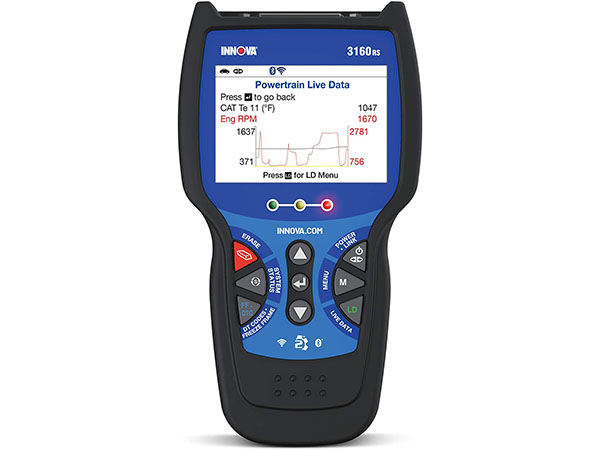
PROS
- Shows parts required for repair, maintenance schedules and more
- Clears all ECU modules and their trouble codes
- Detects issues with hybrid car's batteries and charging
- Supports ABS, SRS, TPMS and Oil Change lights
CONS
- Quite pricey
The Innova scanner is quite impressive, even at first glance. It packages the powerful OBD2 system in a stylish and convenient handheld device, and boasts a variety of features. Perhaps the most notable of these is the color screen—while not necessarily a huge feature, it certainly reflects the quality of the product.
All-in-One PRO-package: it has an extra features and options
OBD2 scanners, unfortunately, can only work on cars as old as 1996; anything older than that, and chances are your car is incompatible. The Innova, as with most premium scanners, falls into this category. Regardless of country, as long as your car is a 1996 or newer, this scanner can read and clear any of your check engine codes. In addition, it can resolve most ABS (Antilock Brake), SRS (Supplemental Restraint System, related to airbag function) and TPMS (tire pressures and sensor data) trouble codes as well.
Above all, this scanner gives you transparency. Whenever a light is falsely on, the Innova clears it to ensure you know whenever something is actually wrong with your vehicle. On top of that, you can stream live data to monitor your car’s condition over a stretch of time. All in all, this is our choice for the best OBD2 scanner on the market. The only caveat, however, is that it doesn’t seem to be updated for specific vehicles past 2014; you’d have to select an older model of your vehicle line.
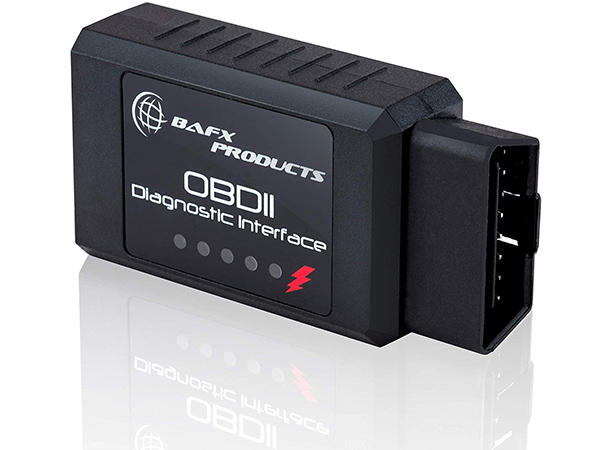
PROS
- Reads "Check Engine" light easily
- Supports a wide range of cars (1996 or newer)
- 2 years manufacturer's warranty
- Very affordable
CONS
- Not suitable to work with iOS-devices (iPhone, iPad, iMac, etc)
- Does not read ABS, SRS, TPMS or Oil Change lights
This scanner is also a formidable choice, as reflected by its Amazon’s Choice sticker. A couple things to distinguish right off the bat: the scanner is based on a bluetooth connection with your phone or tablet, but this specific version is not compatible with iOS products. If you have an Android or Windows device, then you’re covered.
Too Good to be True? – Yes, it’s solid choice too!
Reading through the product description might raise a few eyebrows; for its affordable price, it’s definitely surprising to see the functions it supports. It can diagnose and clear check engine codes (unsurprising), check O2 levels and fuel pressure, and is compatible with most cars from 1996 or newer. There’s even a few claims that it can read ABS codes provided the right app is used. So, what’s the catch?
Despite the vast majority of reviews being very positive, there is a decent portion of buyers that had an odd issue with the reader. The more benign of the issues is that the device, for many, doesn’t stay plugged in to the OBDII reader if not physically supported. However, the glaring criticism was that this reader sometimes causes cars to malfunction, often severely (dead battery and such). While the price and functions are very enticing, the jury is still out on whether this is a better option than, say, the Ancel AD310.
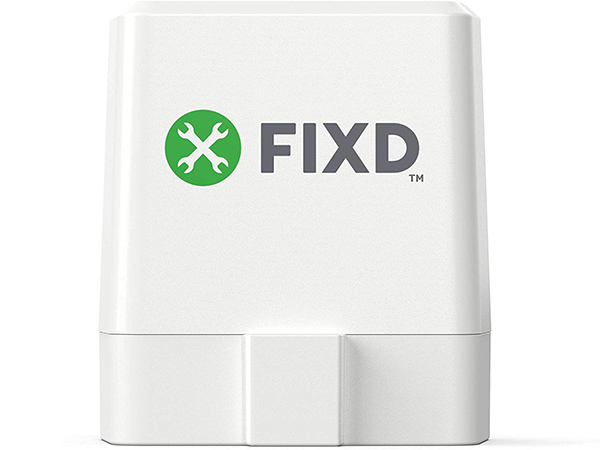
PROS
- Supports more than just check engine codes
- Supports all gas-powered cars (1996 or newer)
- Great data breakdown and maintenance recommendation
- Remote monitoring
CONS
- Many check engine issues go undiagnosed
As a middle-of-the-road choice, you can’t expect the FIXD to do everything; however, it puts an interesting twist on OBD2 scanners. With a FIXD sensor, you can monitor multiple vehicles on one device – is this innovative or just fluff?
Mid-Range Creativity
The FIXD reader does what you’d expect from a bluetooth connector. You connect it to your OBD2 port, sync the device with your smartphone (Android or iOS), and get feedback wirelessly. You can also read a variety of live data, such as the common air flow and fuel pressure values. In addition, the scanner provides valuable information like recommended service intervals, either based on your mileage or maintenance needs. On top of all of this, the diagnostics information is quite comprehensive and useful.
On the other hand, there are some complaints. Dozens of buyers noted how frustrating the app could be; it requires a lot of your information (name, email, and such) and could be inconsistent in terms of identifying existing issues. Despite the novel concept of monitoring multiple vehicles and an excellent data breakdown, the app is quite simply not what you’d expect for the cost.
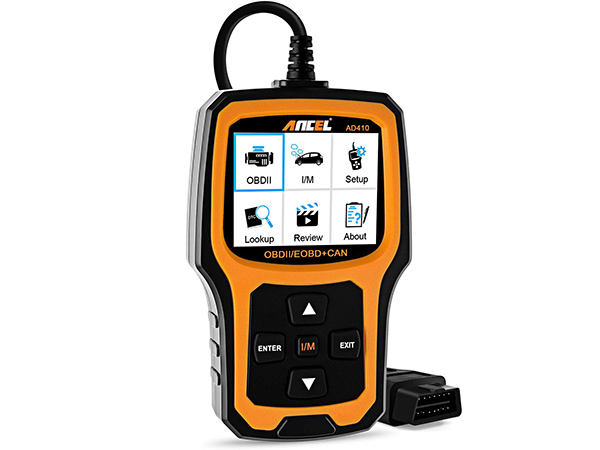
PROS
- Supports error code lookup
- Supports all cars (1996 or newer)
- Reliable and user-friendly
- Fairly affordable
CONS
- No ABS, SRS, or SAS error support
The Ancel AD410 is similar both in name and overall function to the Ancel AD310 we looked at previously. It boasts a basic but convenient interface with excellent functionality. It goes a little beyond check engine code scanning, but doesn’t stray too far from the basics.
Does What You Need
Oftentimes, you might want a product that doesn’t quite have the most cutting-edge functions, but can do what it needs to reliably and at a lower relative cost—this reader fits the bill. At a price comparable to the AD310 (our budget choice), it lacks a few common features such as reading ABS, SRS, or SAS error codes. However, a key advantage is that this device supports DTC (Diagnostics Trouble Code) lookup, which basically means you can read what your error codes mean right from the scanner.
In addition, the AD410 offers O2 sensor and fuel pressure tests, in addition to giving you an overall maintenance picture. The icing on the cake is its wide applicability, as it supports all OBDII protocols for cars made in or after 1996. To top it all off, the display supports eight different languages. All in all, while this scanner can’t do everything, it is a very solid choice.
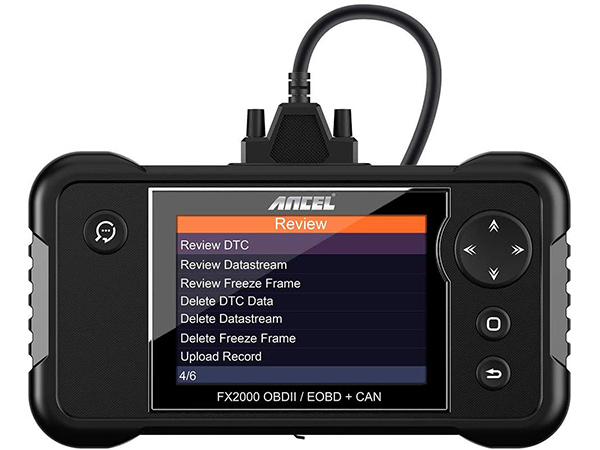
PROS
- Convenient and user-friendly
- Live data stream and graphs for monitoring
- Supports a wide range of cars (most 1996 or newer)
- Extensive list of functions (ABS, ATS, SRS, DTC lookup)
CONS
- Quite pricey
The FX2000 has a much more “premium” look to it than the AD410, but keeps the innate reliability and user-friendly nature. Let’s take a look at how much more this scanner can do compared to its counterpart, and whether or not this is worth the price jump.
Fix Every Little Issue
Whether it’s worth the price is ultimately up to you, but this scanner truly adds a new dimension to car diagnostics. It comes with a sizeable display and several functions – live data stream, DTC definition, and freeze frame, to name a few. Essentially, it’s the reliability of the AD410 combined with the high end of OBDII technology. If you’re someone that likes to fix every minor detail in your vehicle, from the transmission to the airbags, be sure to give this a look.
One downside is the relatively limited car options; while it is extensive enough to likely include yours, make sure to double check the list provided by Ancel. All in all, this premium scanner is both reliable and high-tech, and is a fantastic choice if you’re not afraid to break the bank for quality.
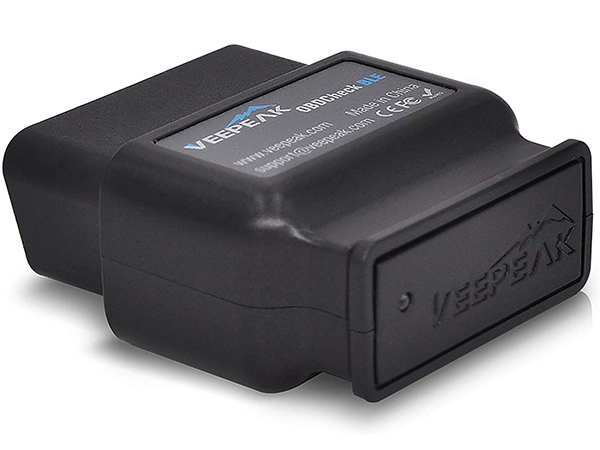
PROS
- Compatible with all US cars from or after 1996
- Live data stream and smog test
- Suitable for third-party apps
- Fairly affordable
CONS
- Relatively limited selection of non-US cars
The Veepeak is an impressive piece of technology that sneaks in to round off our list. It is a small bluetooth device, meaning controlling it is down to a smartphone app (iOS or Android). It stands strong even compared to the impressive bluetooth scanners above.
Solid — For the Most Part
This device offers your typical range of functions: check engine codes, smog test, live data readings, and a couple maintenance tools. It is also applicable for all US cars from 1996 or later, but is more limited to vehicles from abroad. However, the functionality you get out of this is heavily contingent on the app you decide to go for; it works with a myriad of third-party applications for iOS and Android. Unfortunately, some buyers noted that a few of the apps listed on the product page aren’t actually compatible, and that the device itself would be frustrating—a few even complained that their scanner wouldn’t work at all. For its price and versatility, however, this is a good choice.
Why Use an OBD2 Scanner?
With that out of the way, you might still be wondering if an OBD2 reader is a necessity. In short, you certainly don’t have to get one, but it helps immensely in maintaining and understanding your car. If you’re not as savvy with car mechanics and don’t always recognize the issues that prompt a check engine light, for example, having a scanner is a huge aid.
Not only can you better maintain your car (the extent of which depends on the type of OBD2 reader you go for), but it might save your money down the road. Correctly identifying the issue with your vehicle saves you time and money if you decide to take it to a mechanic; oftentimes, repair shops will charge you a small fee for diagnosis. On top of that, an OBD2 scanner helps you pinpoint when there is a genuine issue, letting you know when it’s time to do maintenance or repairs, whether in a shop or by yourself. So, while a reader is not a necessity, it will be a great help in maintaining your car and possibly your finances.
Types of OBD2 Scanners
As you might’ve picked up from our top 8 list, OBD2 scanners come in all shapes and sizes. The more simple tools usually come as a plug-and-play remote, and have the basic OBD2 function of reading and clearing check engine codes. Other features like O2 and fuel pressure tests, live monitoring, and support for other codes (ABS, SRS, etc.) typically come in the more fleshed-out readers. Examples of such simple yet effective OBD2 scanners are the Ancel AD410 and Ancel AD310 devices in our list – they are both reliable and affordable.
The more advanced plug-and-play devices, like the Ancel FX2000 and Innova 3160RS, typically boast a variety of functions. They try to be a “catch-all” product that allows you to get the full picture of OBD2-based maintenance. Features typically include the reading and clearing of all codes (airbag, transmission, braking systems), a fully integrated analysis system (with graphs and live data), and several testing capabilities (O2, fuel pressure, smog).
Finally, there’s the bluetooth scanners; their capabilities vary product-to-product, ranging from basic readers to high-tech versions with a fully integrated app. While these are certainly convenient and often quite affordable, the plug-and-play scanners are sometimes technologically more intuitive.
Picking the Best OBD2 Scanner
Simply put, the “best” scanner depends greatly on what it is you’re looking for. If you want a basic scanner that does its job without issue, you likely don’t need the more premium options. Something like the Ancel AD310 can read and clear your check engine codes easily and reliably, which is essentially the foundation of a solid OBD2 scanner.
If you want the full range of maintenance capabilities, then it’s a bit different. The more important code-reading features to look out for are ABS (anti-lock braking system), SRS (airbags), and AST (automatic safety transmission) support. Lights related to these are bound to pop up once in a while, and clearing them when needed can set your mind at ease.
Other maintenance functions that are great to have are readings for fuel pressure and oxygen levels. As for the more routine work, a great scanner will let you know optimal service intervals (based on your fuel statistics and mileage) and make suggestions based on your car’s performance overall. If it doesn’t have these features, it’s a good idea to regularly check your live data and freeze frames regardless.
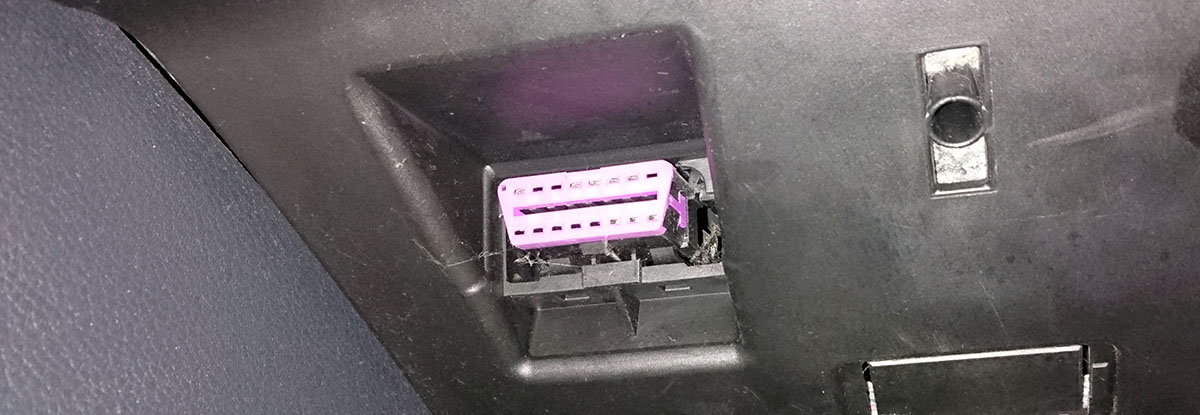
OBD2 Trouble Codes
To wrap it up, let’s take a quick look at check engine codes specifically. You’ll quickly notice that every code has the same structure to it: X1234, where X is the relevant letter and 1234 the numbers. The letter can be one of four things: B (body), C (chassis), P (powertrain), and U (network). Essentially, the first entry lets you know where in the car the issue occurred.
The first number (i.e. the “1” in our hypothetical example) is always either a 0 or a 1; 0 means it’s a universal error code, while 1 means it pertains to the specific manufacturer. The second number lets you know which system has the issue—for example, P01 lets you know it is a generic error related to Fuel and Air Metering, as that is the first category in “Powertrain”.
The last two digits (the 34 in our example) is simply the error code. So, adding to our latest example, P0171 would describe error 71 with Fuel and Air Metering. It is as follows:
P0171 System Too Lean (Bank 1) — This has to do with oxygen levels – the code is simply telling you that there is too much air flowing into the engine compared to fuel (read more about P0171). There could be a variety of causes here, so checking oxygen levels and fuel pressure comes in handy. P0172 System Too Lean (Bank 2) is similar, but describes that too much air is flowing into the other end of the engine.
There are a variety of Powertrain codes alone, spread across either “categories”. Here’s an example of one related to the Ignition System (“category” 3):
P0300 Random/Multiple Cylinder Misfire Detected – As the name suggests, this describes that either a random cylinder or multiple have misfired, meaning it’s probably not down to a single spark plug or injector. The common causes of this code include low fuel pressure, a vacuum leak, engine issues, and EGR malfunction. However, if you get this in conjunction with a related code (P0307, for example) it’s probably best to go through that one first, as it could be causing the P0300 error.
One of the more common OBD2 codes, however, are the EVAP (Auxiliary Emissions Controls) codes, or the P04xx section. Let’s look at an example:
P0440 Evaporative Emissions Control System Malfunction – While tricky for a layman to diagnose, there are a few things you can try to check. The code itself describes that your EVAP system (basically the way your fumes are stored until burnt in the engine) is malfunctioning. This could be down to a leak, a faulty fuel cap or NLVD (the sensor that checks if the system works properly), or a defective purge solenoid (the valve that leads the fumes towards the engine).
Not all EVAP codes are too difficult to figure out; P0455 has “(gross or large leak)” in the name, so it’s a little more straightforward, same with the P0456 code. As with any vague codes, though, P0440 could be caused by a variety of things that the typical DIYer might not be familiar with.
Hopefully this section offered a bit of insight about how DTCs are structured and diagnosed. Look below for a full list of “categories” for Powertrain error codes and you can find the full DTCs list by the link.
1: Fuel and Air Metering P0100-P0199
2: Fuel and Air Metering Injector Circuit P0200-P0299
3: Ignition System (Including Misfires) P0300-P0399
4: Auxiliary Emissions Controls P0400-P0499
5: Vehicle Speed Controls And Idle Control System P0500-P0599
6: Computer Output Circuit P0600-P0699
7, 8, 9: Transmission P0700-P0999
- How to use an OBD2 Scan tool? – Carfax
- Where is the OBD2 port in my car – Outils OBD Facile


